Categories Products for NMR Oligo Synthesis Service Uniformly labelled DNA Synthesis
Uniformly labelled DNA Synthesis
Uniformly stable isotope-labelled DNA Oligonucleotide Synthesis Service
Silantes has developed a cost-effective technology for synthesizing stable isotope-labelled DNA oligonucleotides. The enzymatic method differs from the conventional solid-phase synthesis and allows a more efficient conversion of isotope-labelled dNTPs into oligonucleotides, either isotope-labelling the entire oligonucleotide or all positions of a particular base.
Silantes has developed a cost-effective technology for synthesizing stable isotope-labelled DNA oligonucleotides. The enzymatic method differs from the conventional solid-phase synthesis and allows a more efficient conversion of isotope-labelled dNTPs into oligonucleotides, either isotope-labelling the entire oligonucleotide or all positions of a particular base.
Silantes' enzymatic DNA synthesis method consists of four steps: primer and template design, annealing, synthesis, separation and purification resulting in a high purity DNA sample at a low price.
In the following, the individual steps of enzymatic DNA oligonucleotide synthesis are briefly described:
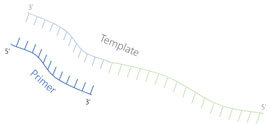 Step 1: Primer and template design
Step 1: Primer and template design
A primer oligonucleotide is designed, which provides the start signal for the enzyme in a later step. Subsequently, a template oligonucleotide complementary to the primer and the product sequence is designed. This template oligonucleotide forms the transcription template for the enzyme.
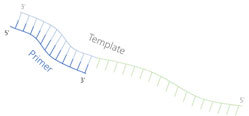 Step 2: Annealing
Step 2: Annealing
The complementary part of the template is annealed to the primer.
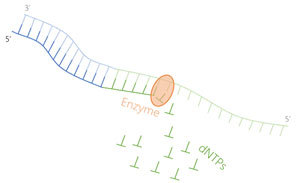 Step 3: Synthesis
Step 3: Synthesis
The enzyme and isotope-labelled dNTPs are now added to the template-primer complex. The enzyme attaches to the primer resulting in product synthesis.
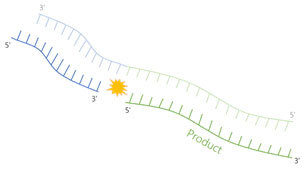 Step 4. The innovative step: Separation and purification
Step 4. The innovative step: Separation and purification
The isotope-labelled product is now bound in a product-primer-template complex. Purification of this complex presents a challenge due to the risk of destroying the product sequence when separating the complex. To overcome this potential problem, Silantes has developed an innovative approach by modifying the primer and carefully adjusting process parameters during acid hydrolysis. This allows to separate the intact product, primer and template sequence from each other.
The reaction components are then fractionated by HPLC. An exemplary HPLC elution profile is shown below. The fraction containing the product sequence is then isolated.
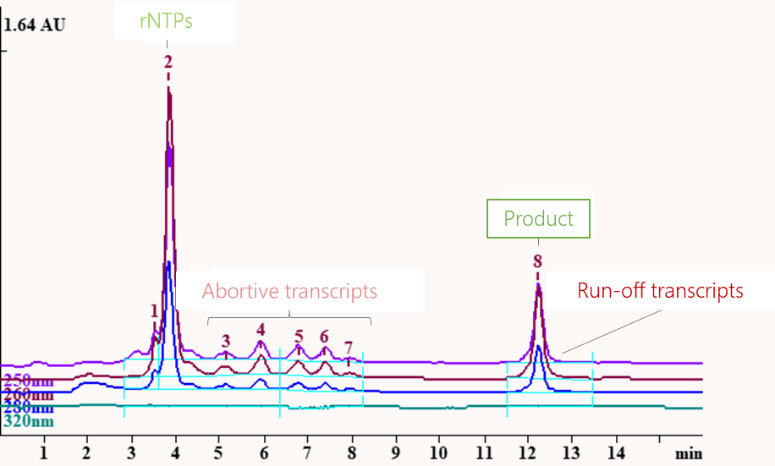
Get your DNA synthesis project started with Silantes
To provide a quote for your DNA synthesis project, we need the following information:
- length of the oligonucleotide,
- sequence of the oligonucleotide,
- specification of isotopic labelling (entire oligonucleotide or all positions of a particular base) and
- desired quantity.
Based on this information, we prepare a quotation for the synthesis of your DNA fragment. Once an order is placed, purified DNA fragment delivery time is commonly less than 6 weeks.
For quotation inquiries or to get more information please contact sales@silantes.com.

